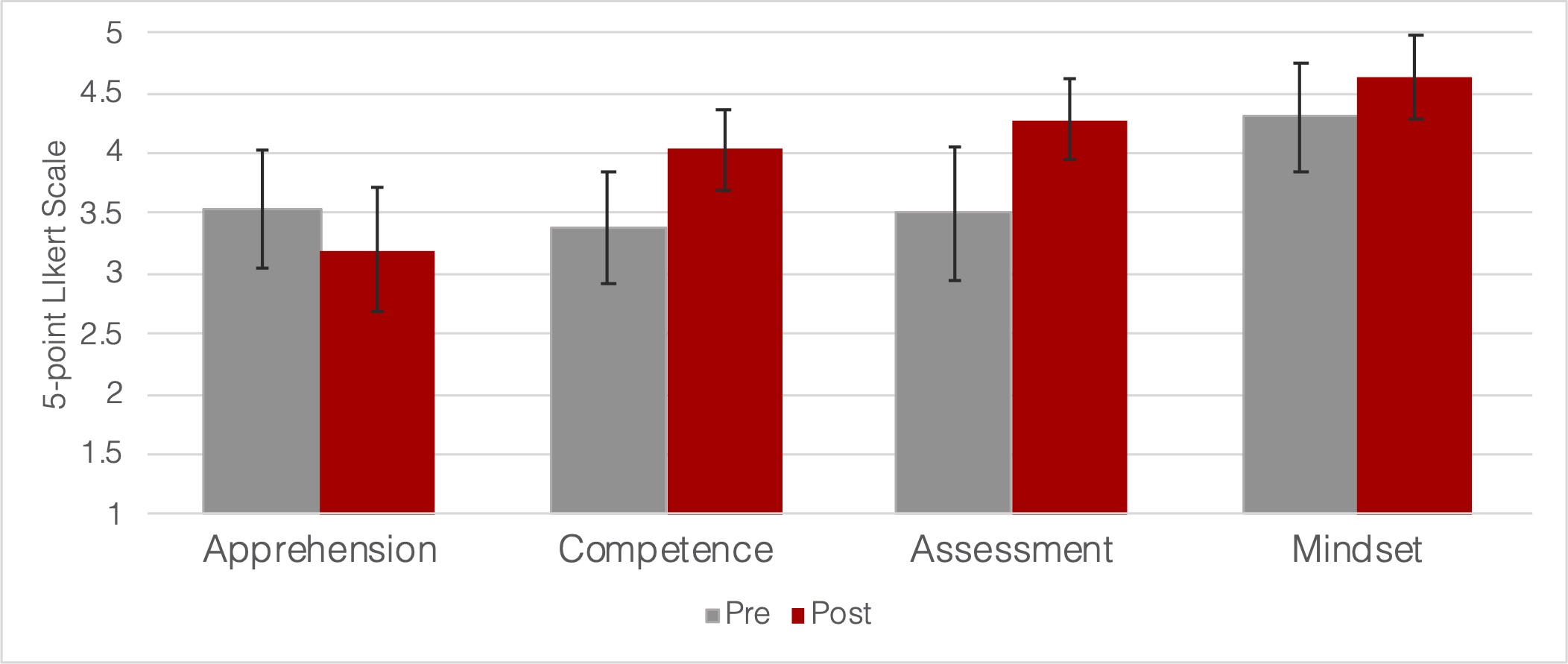How Does Practicing Speeches Improve Students’ Attitudes Towards Public Speaking?
Practicing decreases apprehension and increases perceived skill competency and ability to self-assess. |
Strategic Presentation Skills
In a strategic presentation skills course, students learn practical skills for preparing and delivering professional presentations. Throughout the mini-course students develop and practice both a 1-minute elevator pitch and a 10-minute briefing.
Traditionally, students practice their speeches independently, with peers, or in front of the class for feedback. In an effort to provide students with additional opportunities to practice their speeches in a low-stakes environment while receiving valuable feedback, Hyatt worked with a group of CMU students to develop a virtual reality app. When using the app, students find themselves in front of a virtual classroom complete with audience members. While students deliver their speech, the software collects data such as pauses in the speech, eye contact with virtual audience members, and body movements, which are then shared with students afterward.
As part of the course, students were required to visit the virtual reality room several times to practice both their elevator pitch and briefing. At the end of the mini course, students reported a perceived increase in their own public speaking skills, a decrease in their apprehension with public speaking, and an increase in their ability to self-assess their skills, as compared to their abilities at the start of the course. These results suggest that in addition to other aspects of the course, practice and feedback may assist students in improving their attitudes, beliefs, and skills regarding public speaking.
Hyatt plans on iterating on this study to better understand how practice and feedback in a virtual environment differs from other types of practice opportunities with regard to improving public speaking skills.

Figure 1. Apprehension ratings were lower following the mini course (M =3.2, SD =.70) as compared to the start of the mini course (M =3.53, SD =.70). Competence ratings were higher following the mini course (M =4.03, SD =.46) as compared to the start of the mini course (M =3.38, SD =.66). Self-assessment ratings were higher following the mini course (M =4.28, SD = .48) as compared to the start of the mini course (M =3.5, SD =.76). Mindset ratings were higher following the mini course (M =4.63, SD =.48) as compared to the start of the mini course (M =4.3, SD =.62). Error bars are the 95% confidence intervals for the means.
For apprehension ratings, the mean difference was significant, Z (10) = -2.27, p = .02, d = .72.
For competence ratings, the mean difference was significant, Z (10) = -2.74, p = .006, d = .87.
For self-assessment ratings, the mean difference was significant, Z (10) = -2.32, p = .02, d = .73. For mindset ratings, the mean difference was not statistically significant.
Filters in which this Teaching as Research project appears:
College: Heinz College of Information Systems & Public Policy
Course Level: Graduate
Course Size: Small (fewer than 20 students)
Technology Enhanced Learning
